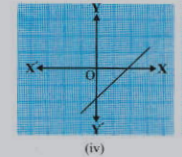A student argues that there are 11 possible outcomes 2, 3, 4, 5,6,7,8, 9, 10, 11 and 12. Therefore, each of them has a probability 1/11. Do you agree with this argument? Justify your answer.Solution in Punjabi
Step by step video & image solution for A student argues that there are 11 possible outcomes 2, 3, 4, 5,6,7,8, 9, 10, 11 and 12. Therefore, each of them has a probability 1/11. Do you agree with this argument? Justify your answer. by Maths experts to help you in doubts & scoring excellent marks in Class 10 exams.
Updated on:21/07/2023Topper's Solved these Questions
Similar Questions
Find the probability of getting a head when a coin is tossed once. Also find the probability of getting a tail.
View SolutionIn general, given a polynomial p(x) of degree n, the graph of y = p(x) intersects the x-axis atmost n points. Therefore, a polynomial p(x) of degree n has atmost n zeroes:

View SolutionState whether the following statement is always true, always false or ambiguous. Justify your answer. The Sun orbits the Earth.
View SolutionRefer to Example 13. (i) Complete the following table (ii) A student argues that 'there are 11 possible outcomes 2,3,4,5,6,7.8,9,10,11 and 12. Therefore, each of them has a probability 111. Do you agree with this argument? Justify
View SolutionTwo dice, one blue and one grey, are thrown at the same time. Complete the following table: Event: Sum on two dice, 2, 3, 4, 5, 6, 7, 8, 9, 10, 11, 12 Probability, , , , , , , , , , , From the above table a student argues that there are 11 possible outcomes 2, 3, 4, 5, 6, 7, 8, 9, 10, 11 and 12. Therefore, each of them has a probability 111 . Do you agree with this argument?
View SolutionWhen we toss a coin, there are two possible outcomes-heat or tail. Therefore, the probability of each outcome is 12. Justify your answer.
View Solutionयदि (10)9+2(10)8(11)1+3(10)7(11)2+4(10)6(11)3+...+10(11)9=K(10)9तब K का मान ज्ञात कीजिए |
View SolutionTwo dice are rolled simultaneously and counts are added
A student argues that there are 11 possible outcomes 2,3,4,5,6,7,8,9,10,11 and 12. Therefore, each of them has a probabilty 111. Do you agree with this argument? Justify your answer.
View SolutionTwo dice are rolled simultaneously and counts are added (i) complete the table given
(ii) A student that 'there are 11 possible outcomes 2, 3, 4, 5, 6, 7, 8, 9, 10, 11 and 12. Therefor, each of the them has a probability 111. Do you agree with this argument? Justify your answer.

View SolutionTwo dice, one blue and one grey, are thrown at the same time.
i] Write down all the possible outcomes and complete the following table:

ii] A student argues that 'there are 11 possible outcomes 2,3,4,5,6,7,8,9,10,11 and 12. There, each of them has a probability 111. do you agree with this arguement ?
View SolutionWhen we toss a coin, there are two possible outcomes-head or tail. Therefore, the probability of each outcome is 12. Justify your answer.
View SolutionTwo dice,one blue and one grey, are thrown at the same time. Complete the following table: Event: Sum on two dice, 2, 3, 4, 5, 6, 7, 8, 9,10, 11, 12 Probability_,_ ,_ ,_ ,_ ,_ ,_ ,_ , ,_ ,_ ,_ From the above table a student argues that there are 11 possible outcomes 2, 3, 4, 5, 6, 7, 8, 9, 10, 11 and 12. Therefore, each of them has a probability 1/11. Do you agree with this argument?
View SolutionTwo dice are rolled simultaneously and counts are added (i) complete the table given
(ii) A student that 'there are 11 possible outcomes 2, 3, 4, 5, 6, 7, 8, 9, 10, 11 and 12. Therefor, each of the them has a probability 111. Do you agree with this argument? Justify your answer.

View SolutionTwo dice, one blue and one grey are thrown at the same time. Write down all the possible outcomes. : A student argues that 'there are 11 possible outcomes 2, 3, 4, 5, 6, 7, 8, 9, 10, 11 and 12. Therefore, each of them has a probability 111. Do you agree with his argument ? Justify you answer :

View Solutionकिसी कक्षा में निम्नलिखित आयु के छात्र हैं। निम्नतम आयु वाले छात्रों की बारम्बारता बतायें।
11, 12, 13, 14, 11, 15, 11, 12, 11, 12, 11, 11, 13, 13, 12, 11, 11
View Solution
